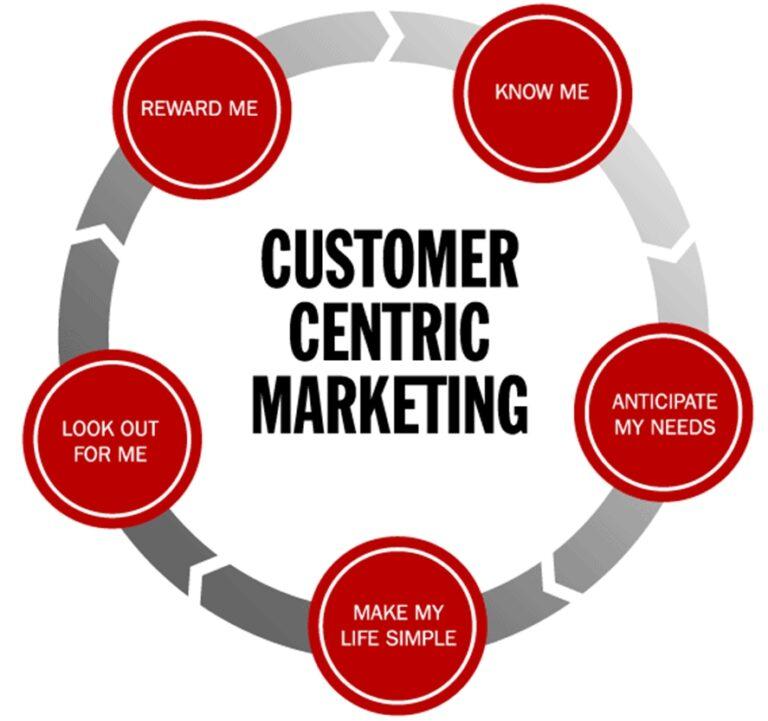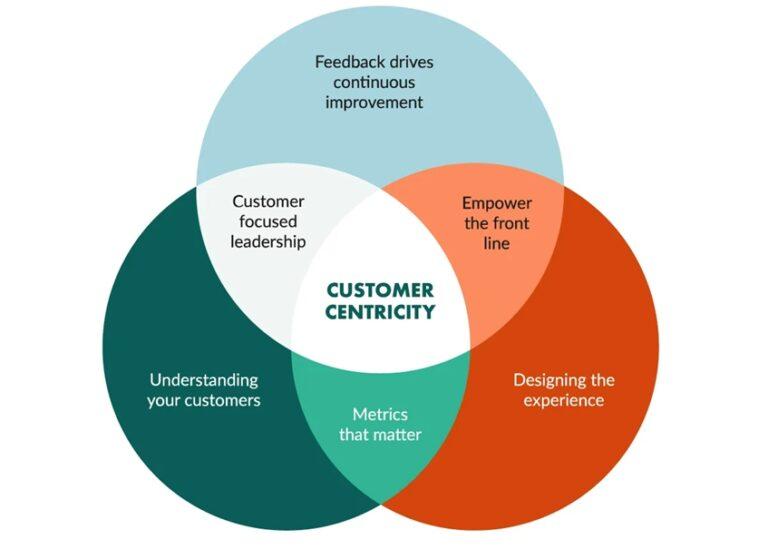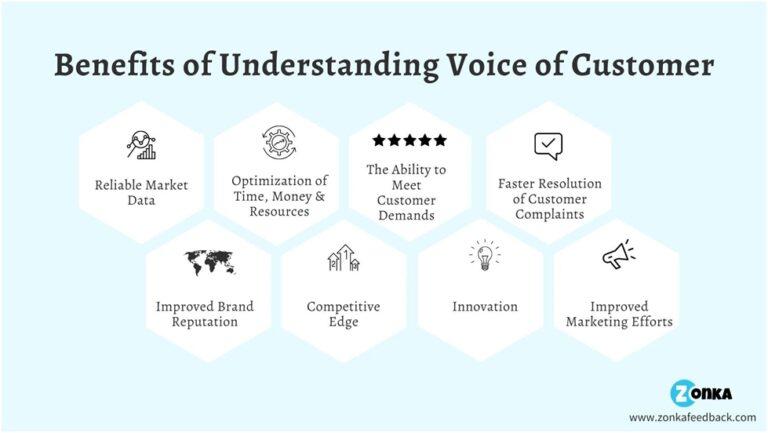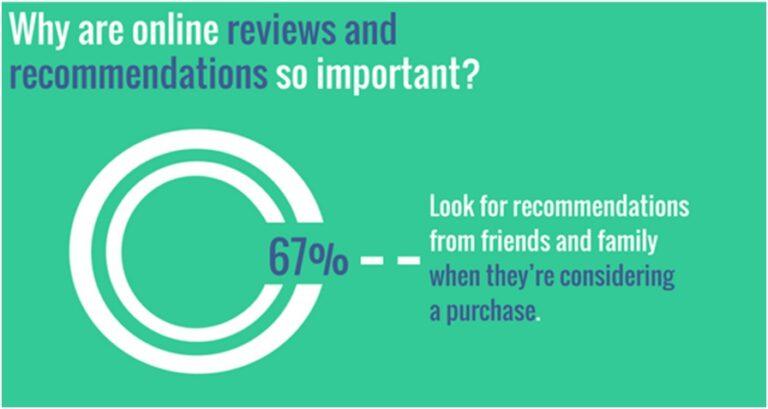A good and bad point about marketing is that there are too many approaches to achieving the same goal. This at times might leave marketers in a dilemma.
The traditional marketing approach still generates results. However, it has become resource-intensive and the results aren’t as lucrative as they used to be.
Moreover, there have been a lot of changes in the market itself. We have been hit by a global pandemic which has brought in a lot of fundamental changes. The takeover of technologies such as AR, VR and Metaverse has also commenced.

This has necessitated the recalibration of marketing strategies. One strategy among the many creating buzz has emerged as a viable solution for the long term.
The strategy in question here is customer-centric marketing strategy. This strategy enables you to form long-term positive relations with your customer base. As a result, you have a loyal customer base that acts as brand advocates for your brand.
Let us learn more about this strategy!
What is a Customer-Centric Marketing Strategy?
A customer-centric marketing strategy is an approach that puts the customer’s needs, expectations and interests at the core of considerations for every marketing and advertising related decision making.
This requires a deep understanding of who your customers are and what their needs and preferences are. The good thing is that businesses collect a lot of data. It thus, becomes easy to implement a customer-centric marketing strategy.
This strategy fundamentally shifts the marketing approach of a business. The core objective shifts from ‘how to be more attractive to the customers’ to ‘how to be the best option for customers’.

Such a drastic change in approach may raise concerns for marketers. However, this approach is well suited for long-run marketing success.
It achieves two big objectives of the marketing operations quite seamlessly. Firstly, it instills confidence and loyalty among the customer base. Secondly, your customer base acts as advocates for your brand.
All of this is achieved while ensuring organic growth that can be sustained in the long run through all technological and market changes.
With this cleared, let us head on and understand what gains can your business make by shifting to a customer-centric marketing strategy.
Benefits of Implementing a Customer-Centric Marketing Strategy
Learning about what a customer-centric marketing strategy is might have enlightened you about its upsides. Here, I shall explain how these upsides translate into business gains:
Better Understanding of Customers
Insights are valuable, especially when they are about the changing customer needs, wants, preferences and interests.
An in-depth understanding of your customers enables you to do two impactful things. Firstly, you can design better products and services that can satisfy the consumers’ needs more thoroughly.

Secondly, you can provide the customers with a better customer experience that matches the changing customer expectations.
Promotes Brand Loyalty
Creating a customer base that is loyal to one’s brand is the ultimate goal of any customer success team. It is a known fact that retaining an existing customer is more economical than acquiring a new one.

The benefits don’t just end there. Existing customers tend to spend 67% more than new customers. So a loyal customer base equates to a steady flow of growing revenue.
Customers Become Brand Advocates
The thing about happy and satisfied customers is that they suggest your products to others around them. Considering that 82% of American consumers look for recommendations from their close ones, this can benefit you tremendously.

Moreover, a consumer recommending your brand and products to others adds a lot to your brand value and credibility in the market.
Long-term Marketing Solution
In recent years, customer experience has garnered a lot of importance. Customer-centric marketing strategy enables you to maximize good customer experience.
Giving the customers what they want, being the best at providing them with those values while ensuring a good customer experience are the key components of a winning long-term marketing solution.
Hedging Against Market Shifts and Technological Changes
This strategy is centered around being the best option for the customers. This requires a brand to be flexible and far-sighted enough to enable this.
Adapting to incoming changes, be it in terms of changes in the market, technology or consumer expectations is a strong point of this strategy.
With this approach, your business will be well-positioned for the long term. You will have the ability to understand changes and quickly adapt to those.
Now, with the propositions of the customer-centric marketing strategy clear, we can continue to learn how you can build one for your business.
How to Build a Customer-Centric Marketing Strategy?
Here is a step-by-step guide to help you formulate a customer-centric marketing strategy that is the best fit for your business.
Have the Senior Leadership Lead the Transition
The senior leadership of any firm is an important component amidst any transition. Shifting to a customer-centric marketing strategy is a big change.
By having the senior management lead the transition, you can minimize any internal friction during the transition. Moreover, the senior leadership has more business experience and can leverage that to facilitate a smooth transition.

A change in strategy might even require restructuring in the marketing department or even spill over to other departments. Having senior leadership in charge of the transition will enable you to use their leadership skills and move things quickly.
With them at the helm of the ship, you can navigate quickly and safely through the currents of change and make it to safe waters.
Once the transition is complete, have the senior leadership get everyone on board and motivated. Motivation and encouragement from the senior leadership work like a charm.
This will enable you to have a workforce that is more open to such changes and motivated enough to adapt well and hit the ground running.
Create a Framework that Enables Better Customer Understanding
The success of a customer-centric marketing strategy relies heavily on what data you collect about the customers, how you collect it, how you process it and how you make decisions aided by these insights.

There are various ways you can collect data from the customer. Some ways will be more suitable than others. This will depend upon the industry you operate in and the types of products and services you offer. You can:
- Interview customers after a set period when they make a purchase.
- Request for feedback by employing email marketing.
- Have customers participate in surveys at a regular interval.
- Adopt and implement Social Listening to understand what is being said about your brand and products in the market.
- Gather behavioral data from first-party or third-party sources.
- Utilize marketing touchpoints as customer data input points for gathering additional behavioral data.
- Use Web and Social Media Analytics to understand the general customer sentiment. Also gauge the changes in customer expectations in the market.
- Analyze data gathered by the customer service team on customer difficulties and complaints.
- Listen and analyze sales calls with prospective buyers to understand their requirements. Identify opportunities in terms of solutions and value you can offer.
You can incentivize customers for participating in surveys and providing data. Offer them coupons or discounts on future purchases.
Leverage data generated by customer-facing teams. You will have a better understanding of the people that your customers are.
Employ all available technologies and data analytics methodologies. This will generate accurate and actionable marketing insights.
Consider Decisions from a Customer’s Perspective
With a customer-centric marketing strategy, the aim is to be the best match for the customers. A lot of decisions are taken in day-to-day operations in any business. Every decision has an impact on the customers and their experience.
Thus, the entire decision-making process needs to be carried out differently using a customer-centric marketing strategy. Generally, business decisions are driven to drive revenue growth or sales growth.
However, not always are these revenue-driven decisions going to prove favorable to the end-users.

To become the best option for the end consumer, decision-makers will have to consider each decision from the perspective of an existing and potential customer.
Using the understanding and insights obtained in the previous step, one can have a clearer perspective from the customer’s point of view.
Knowing how each small decision can impact the end consumer will help the business make mutually favorable decisions. Every small decision taken in favor of the customer will have a compounding effect.
Eventually, your operations will be aligned to ensure maximum customer satisfaction and the best possible customer experience.
Creating Relevant and Valuable Content
Content is an important part of the business puzzle. Especially when it comes to explaining your technologies and offerings to the customers.
Content serves several purposes. First and foremost, content enables a business to communicate with the customers and put forth the value proposition that your products would offer them.
Secondly, it explains every aspect of the product to the customers. Be it in terms of technology, features, how it works and troubleshooting.

Your aim should be to provide value to your customers with content. The value could be in terms of educating them about how to use the product, carrying out maintenance, best usage practices, what to avoid, etc.
You could publish guides, manuals and articles on your website explaining different things to your customer about the product they bought.
Additionally, you can also provide them with information about how to use the product in ways that maximize its utility.
Providing relevant content regularly to your customer instills a sense of trust and loyalty in them towards the brand.
Collect Feedback and Improve
You’d be lucky if you get everything right from the get-go. However, it takes a lot of time and iterations for your business processes to function as required.
Making continuous improvements to the business processes is something manageable for all businesses. Proactively collect feedback from your customers and process it for actionable insights.
With enough revisions, you will have your business completely aligned to the functional objectives of a customer-centric marketing strategy.
The Final Word
Do you need customer-centric marketing? It’s like asking if your online business needs SEO, of course yes! If you’re in search of a long-term marketing solution, look no further. Customer-centric marketing strategy is your best bet.
This strategy will help you thrive in the long term and hedge your business’s interest against market volatility and technological and social changes.
Moreover, it will help you adapt quickly to any changes in the demand and preferences of the customers so that you always stay ahead of the competition.
Are you ready to grow your business well into the future?







